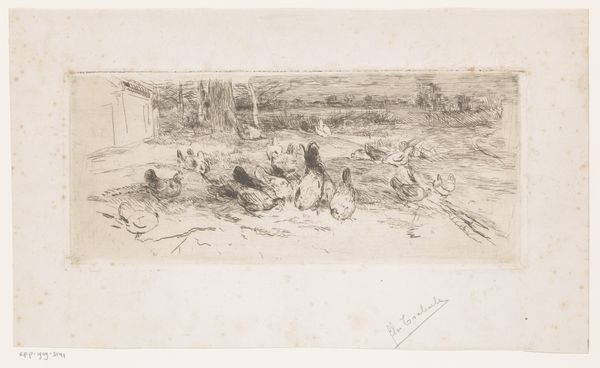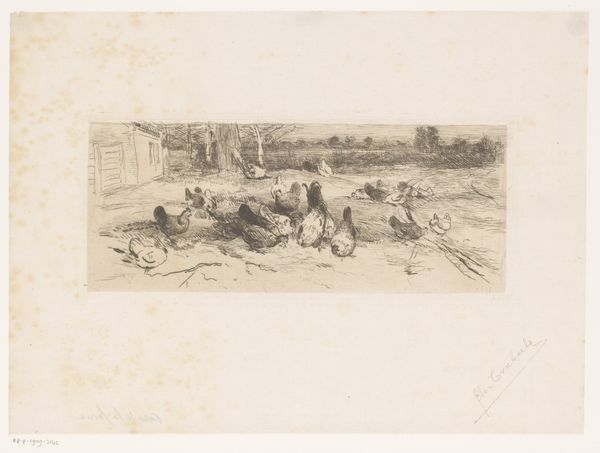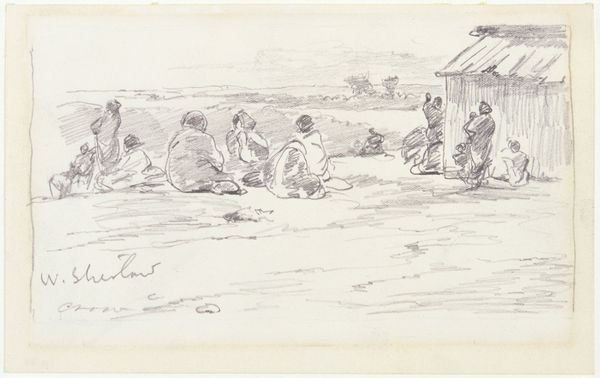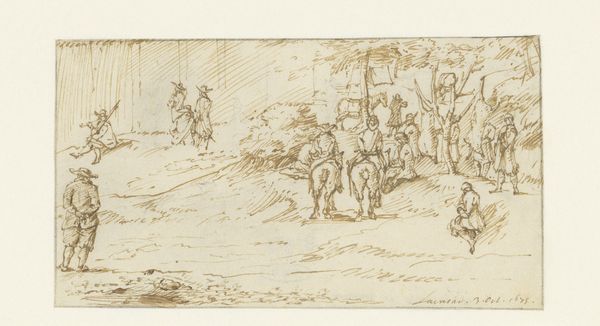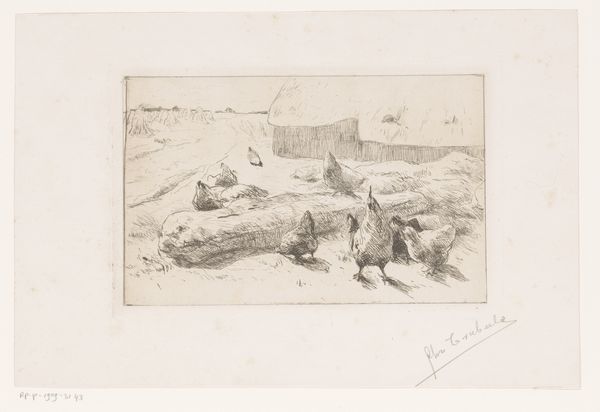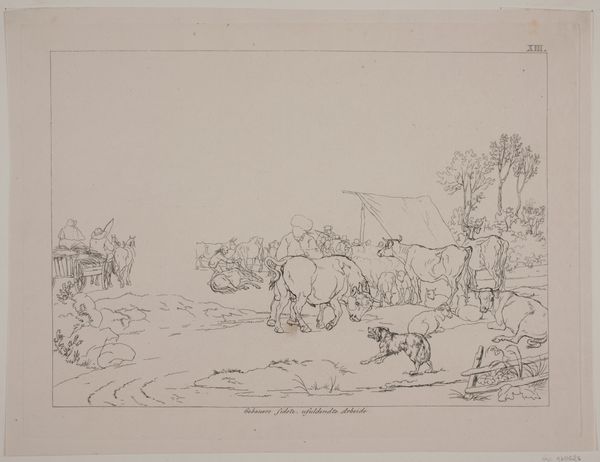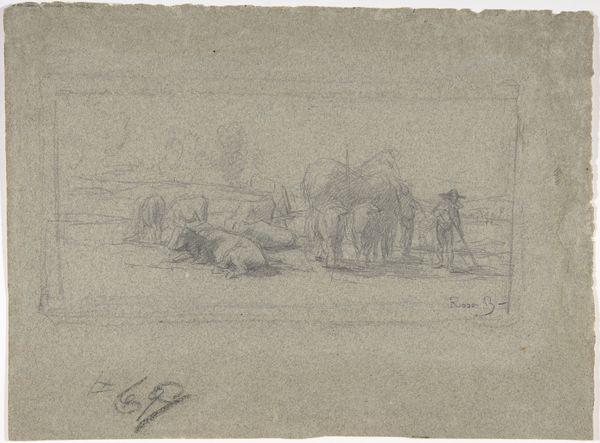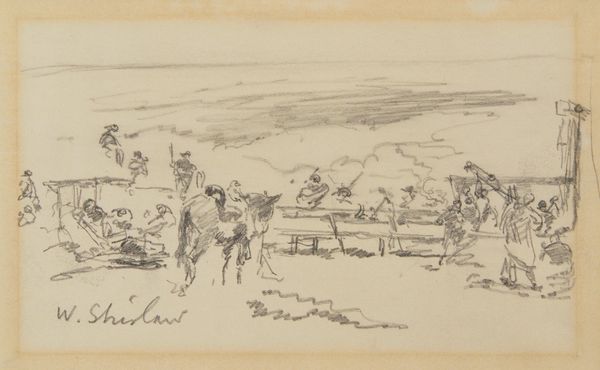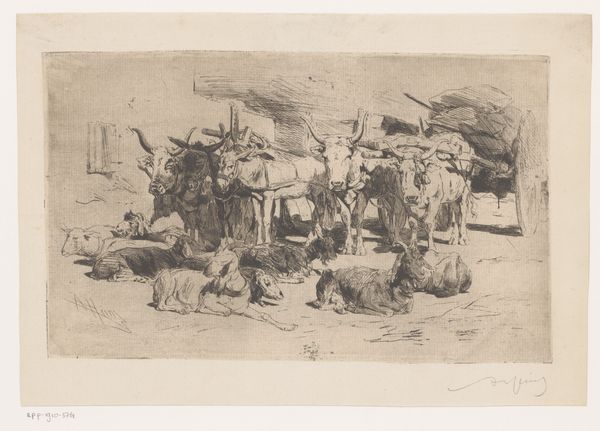
drawing, ink
#
drawing
#
pen sketch
#
landscape
#
ink
#
genre-painting
#
realism
Dimensions: height 130 mm, width 275 mm
Copyright: Rijks Museum: Open Domain
Florent Nicolas Crabeels made this etching of chickens in the grass alongside a road at an unknown date. The image shows a seemingly unremarkable scene, but it provides insights into the changing social and economic landscape of 19th-century Europe. Crabeels was part of a generation of artists who turned away from grand historical subjects to focus on everyday life, particularly in rural settings. This shift reflected a growing interest in the lives of ordinary people, but it also speaks to the impact of industrialization and urbanization. As cities grew, the countryside became a site of nostalgia and a symbol of traditional values. Consider, too, the institutional context: printmaking allowed artists to reach a wider audience, and the rise of art markets meant that there was a demand for scenes like this one. Art historians use a range of resources to understand images like this: census records, economic data, and exhibition catalogs. By placing art in its social and institutional context, we can understand the complex ways in which it reflects and shapes the world around it.
Comments
No comments
Be the first to comment and join the conversation on the ultimate creative platform.
